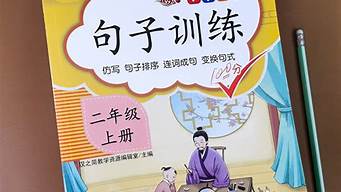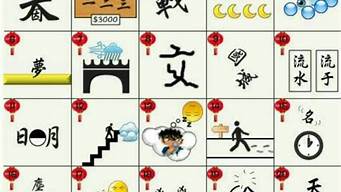Compendium of Materia Medica翻译_compendium
1.衣服上的collection是什么意思?
2.格莱美都有哪些奖项
3.急求!!鸡尾酒的英文介绍~

在英语中,很多单词来自拉丁语借词,其中一些名词,其复数构成形式为词尾的-um替换为-a形式。这些单词主要有:
endostracum-endostraca 壳,内层
caecum-caeca 盲肠
vademecum-vademeca 随身物品,手册,袖珍指南
memorandum-memoranda/memorandums 备忘录,(契约等条文的)节略,便签,便函
notandum-notanda/notandums (拟)记录的事物,备忘录
addendum-addenda/addendums 补遗,附录,附加物
pudendum-pudenda (尤指女性的)
corrigendum-corrigenda 应改正的错误,正误表,勘误表
definiendum-definienda 被下定义的词
referendum-referenda/referendums (关于政治措施、法律等的)公民投票,公民投票权,复决权
propylaeum-proprylaea (神殿等的)入口
peritonaeum-peritonaea 腹膜
gynaeceum- gynaecea (古希腊、罗马的)闺房,女眷内室,雄蕊群
odeum-odea/odeums (古希腊、罗马)奏乐厅,音乐厅,剧场
oleum-olea 油
oleum-oleums 发烟硫酸
mausoleum-mausolea/mausoleums 陵墓,大而阴森的房屋(或房间)
calcaneum-calcanea 跟骨,空凹足
succedaneum-succedanea 代替人,代用品,替代物
perineum-perinea 会阴
periosteum-periostea 骨膜
labium-labia ,(昆虫的)下唇,下唇瓣
rhizobium-rhizobia 根瘤细菌属,任何一种根瘤细菌
paramecium-paramecia 草履虫
gynoecium-gynoecia 雌蕊群
androecium-androecia雄蕊群
palladium-palladia 护卫,保障,雅典娜的神像
stadium-stadia/stadiums 露天大型运动场,赛跑运动场,龄期
medium-media/mediums 中间人,媒介物,传导体,手段,工具
intermedium-intermedia/intermediums 中间体,媒介物
ascidium-ascidia (植物的)瓶状体
nephridium-nephridia 肾,肾管
praesidium-praesidia/praesidiums 主席团,常务委员会
ommatidium-ommatidia/ommatidium (昆虫的)小眼
pyxidium-pyxidia 盖果
antependium-antependia/antependiums (教堂圣坛前的)帷幔,屏布
compendium-compendia/compendiums 摘要,纲要,概要
minifundium-minifundia 小庄园,小领地,小地产
latifundium-latifundia 打庄园,大领地,大地产
plasmodium-plasmodia 变形体,原质团,疟原虫
podium-podia/podiums 墩座墙,乐队指挥台,交通指挥台
pseudopodium-pseudopodia (动物的)伪足,(苔藓的)假蒴柄
epicardium-epicardia 心外膜,心包脏层
pericardium-pericardia 心包
precordium-precordia 心前区
primordium-primordia 原基
exordium-exordia/exordiums (讲话、论文等的)开端,序言,绪论
patagium-patagia 翅膜,(鳞翅目昆虫的)领片
contagium-contagia 接触传染物
florilegium-florilegia 选集,作品集锦,花谱,群芳谱
sporangium-sporangia 孢子囊,(苔藓植物的)孢蒴
horologium-horologia 钟表,时钟座
brachium-brachia 耾,上臂
ischium-ischia 做骨,坐节,(昆虫的)侧板
mycelium-mycelia 菌丝体
epithelium-epithelia/epitheliums 上皮,皮膜
endothelium-endothelia 内皮,内种皮
mesothelium-mesothelia 间皮
ilium-ilia 髂骨,肠骨
milium-milia 粟粒疹,粟丘疹
prothallium-prothallia 原叶体
pallium-pallia/palliums 大披肩,(昆虫的)隔膜,大脑皮层,大脑皮质
penicillium-penicillia/penicilliums 青霉菌,毛丛
scholium-scholia/scholiums (古典文学的)页旁注解,附注,例证
encomium-encomia/encomiums 赞扬,推崇,赞词,颂词
cranium-crania/craniums 头盖,头盖骨,脑壳
pericranium-pericrania 颅骨膜,头盖骨,头颅
osteocranium-osteocrania 骨颅
chondrocranium-chondrocrania 软骨颅
proscenium-proscenium 舞台前部,(泛指)前部,显著地位
tirocinium-tirocinia 学徒期限,学徒身份,技艺初步,技艺入门
triclinium-triclinia (古罗马)环绕在桌面的躺椅
pollinium-pollinia 花粉块
decennium-decennia 十年
biennium-biennia 两年
triennium-triennia 三年
millennium-millennia/millenniums 一千年,太平盛世,想像中的黄金时期
quinquennium-quinquennia/quinquenniums 五年
syconium-syconia 隐头花序
carpogonium-carpogonia 果胞
sporogonium-sporogonia 孢原细胞
spermatogonium-spermatogonia 精原细胞
principium-principia 原理,原则,基础
marsupium-marsupia 育儿袋,卵袋
syllabarium-syllabaria 音节表,字音表
columbarium-columbaria 骨灰盒安置所,放骨灰盒的壁龛,鸽棚
herbarium-herbaria 植物标本集,植物标本室,植物标本盒
solarium-solaria 日光浴室,日光治疗室
cinerarium-cineraria 骨灰盒存放所
honorarium-honoraria/honorariums 酬金,谢礼
insectarium-insectaria 养虫室
planetarium-planetaria/planetariums 太阳系仪,天象仪,天文馆
termitarium-termitaria 白蚁巢
armamentarium-armamentaria/armamentariums 一套设备
serpentarium-serpentaria/serpentariums 蛇类展览馆
aquarium-aquaria/aquariums 养鱼缸,水族馆,水族槽
vivarium-vivaria 动物(或植物)园
equilibrium-equilibria/equilibriums 平衡,均衡,平均,相称
disequilibrium-disequilibria/disequilibriums 失去平衡,不均衡
perichondrium-perichondria 软骨膜
imperium-imperia 最高权力,绝对统治,管辖,执法权,主权
bacterium-bacteria 细菌
delirium-deliria/deliriums 说胡话,极度兴奋,发狂
corium-coria 真皮
triforium-triforia 教堂拱门上面的拱廊
anticlinorium-anticlinoria 复背斜
synclinorium-synclinoria 复向斜
emporium-emporia/emporiums 商场,商业中心,大百货商店
sensorium-sensoria/sensorium 感觉中枢
sudatorium-sudatoria/sudatoriums 热气浴室,热气浴
crematorium-crematoria/crematoriums 焚尸炉,火葬场
fumatorium-fumatoria/fumatoriums 密封熏蒸室,熏蒸
sanatorium-sanatoria/sanatoriums 疗养院,休养地
moratorium-moratoria/moratoriums (依法给欠款人的)延期偿还权,(欠款的)延续偿还期
natatorium-natatoria/natatoriums 游泳池(尤指室内游泳池)
auditorium-auditoria 听众席,观众席,旁听席,讲堂,礼堂
lubritorium-lubritoria 机动车润滑油加油站
atrium-atria/atriums (古罗马建筑物的)中庭,正厅,门廊,心房
epigastrium-epigastria 腹上部,第一膜片
hypogastrium-hypogastria 腹下部,下腹
mesogastrium-mesogastria 中腹部,(胚胎的)骨系膜
gymnasium-gymnasia/gymnasiums 体育馆,健身房,大学预科
symposium-symposia/symposiums 酒会,座谈会,专题讨论会,专题论文集
epimysium-epimysia 肌外膜
endomysium-endomysia 肌内膜,肌纤维衣
solatium-solatia 赔偿费
cymatium-cymatia 反曲线状,拱顶花边,波状花边
consortium-consortia 财团,联合企业,合作,合伙
ostium-ostia 口,门,孔
syncytium-syncytia 合胞体
colloquium-colloquia/colloquiums (学术)讨论会,学术报告
effluvium-effluvia/efflviums (臭气、液体的)散发,放出,恶臭气,无声放电
diluvium-diluvia/diluviums 洪积层,洪积流
alluvium-alluvia/alluviums 冲积层
compluvium-compluvia 房顶洞
trapezium-trapezia 梯形,不规则四边形,大多角骨
velum-vela 帆(尤指软腭),膜,缘膜,菌幕
filum-fila 丝
hilum-hila 脐,核,粒心
vallum-valla/vallums (古罗马的)壁垒,垒墙
labellum-labella (植物的)唇瓣
flabellum-flabella (身体上)呈扇形的器官(或部分)
cerebellum-cerebella 小脑
flagellum-flagella/flagellums 鞭毛,鞭状体,(昆虫触角的)鞭节,鞭子
clitellum-clitella 环带,生殖带
scutellum-scutella 小盾片,胚鳞
spirillum-sprilla 螺旋菌
衣服上的collection是什么意思?
你好,当然不是了。
《本草纲目》是1993年上海科学技术出版社出版的图书,作者是李时珍。
五十二卷。 作者用了近三十年时间编成, 收载药物 1892 种,附药图 1000 余幅,阐发药物的性味、主治、用药法则、产地、形态、采集、炮制 、方剂配伍等,并载附方 10000 余。 本书有韩、日、英、法、德等多种文 字的全译本或节译本。集我国16世纪之前药学成就之大成。
书中不仅考正了过去本草学中的若干错误,综合了大量科学资料,提出了较科学的药物分类方法,溶入先进的生物进化思想,并反映了丰富的临床实践。本书也是一部具有世界性影响的博物学著作。被国外学者誉为“东方药学巨典”。
《本草纲目》(Compendium of Materia Medica)是由明朝伟大的医药学家李时珍(1518-1593年)为修改古代医书中的错误而编,他以毕生精力,亲历实践,广收博采,对本草学进行了全面的整理总结,历时29年编成,30余年心血的结晶。共有52卷,载有药物1892种,其中载有新药374种,收集药方11096个,书中还绘制了1160幅精美的插图,约190万字,分为16部、60类。这种分类法,已经过渡到按自然演化的系统来进行了。对植物的科学分类,要比瑞典的分类学家林奈[1]早二百年。每种药物分列释名(确定名称)、集解(叙述产地)、正误(更正过去文献的错误)、修治(炮制方法)、气味、主治、发明(前三项指分析药物的功能)、附方(收集民间流传的药方)等项。全书收录植物药有881种,附录61种,共942种,再加上具名未用植物153种,共计1095种,占全部药物总数的58%。李时珍把植物分为草部、谷部、菜部、果部、本部五部,又把草部分为山草、芳草、溼草、毒草、蔓草、水草、石草、苔草、杂草等九类,是我国医药宝库中的一份珍贵遗产。是对16世纪以前中医药学的系统总结,在训诂、语言文字、历史、地理、植物、动物、矿物、冶金等方面也有突出成就。本书十七世纪末即传播,先后多种文字的译本,对世界自然科学也有举世公认的卓越贡献。其有关资料曾被达尔文所引。用它是几千年来祖国药物学的总结。这本药典,不论从它严密的科学分类,或是从它包含药物的数目之多和流畅生动的文笔来看,都远远超过古代任何一部本草著作。被誉为“东方药物巨典”,对人类近代科学以及医学方面影响最大。是我国医药宝库中的一份珍贵遗产。它的成就,首先在药物分类上改变了原有上、中、下三品分类法,采取了“析族区类,振纲分目”的科学分类。它把药物分矿物药、植物药、动物药。又将矿物药分为金部、玉部、石部、卤部四部。植物药一类,根据植物的性能、形态、及其生长的环境,区别为草部、谷部、菜部、果部、木部等5部;草部又分为山草、芳草、醒草、毒草、水草、蔓草、石草等小类。动物一类,按低级向高级进化的顺序排列为虫部、鳞部、介部、禽部、兽部、人部等6部。
格莱美都有哪些奖项
你好
collection: [ k?0?5'lek?0?6?0?5n ]
n. 收藏品,收集物
例句与用法:
1. There are two collections a day from this letter box.
这个邮箱每天开两次。
2. You are invited to view our autumn collection.
您被邀请参观我们的秋季时装展览。
3. She selected a diamond ring from the collection.
她从收藏品中挑选了一枚钻石戒指。
4. The painting has pride of place in his collection.
这幅画在他的收藏品中最为珍贵
5. The firm contributed 10,000 to the collection.
公司拿出10,000元做为募捐。
6. Is the collection going to be divided up or sold as a whole?
这批收藏品是零卖还是一起卖?
英英解释:
名词collection:
1. several things grouped together or considered as a whole
同义词:aggregation, accumulation, assemblage
2. a publication containing a variety of works
同义词:compendium
3. request for a sum of money
同义词:solicitation, appeal, ingathering
4. the act of gathering something together
同义词:collecting, assembling, aggregation
谢谢
急求!!鸡尾酒的英文介绍~
格莱美都有哪些奖项
格莱美都有哪些奖项,格莱美的奖项含金量非常高,格莱美这个奖项可以与影视界的奥斯卡相比,并且权威性十分高,是由音乐学院当中的专业人士评分选出的。格莱美都有哪些奖项。
格莱美都有哪些奖项1格莱美奖项
综合(General)
年度制作(Record of the Year)
年度专辑(Album of the Year)
年度歌曲(Song of the Year)
最佳新人(Best New Artist)
流行音乐(Pop)
最佳流行歌手(Best Pop Solo Performance)
最佳流行对唱/组合(Best Pop Duo/Group Performance)
最佳流行演唱专辑(Best Pop Vocal Album)
最佳传统流行演唱专辑(Best Traditional Pop Vocal Album)
舞曲/电子音乐(Dance/Electronic)
最佳舞曲制作(Best Dance Recording)
最佳舞曲/电子专辑(Best Dance/Electronic Album)
当代器乐(Contemporary Instrumental)
最佳当代器乐演奏专辑(Best Contemporary Instrumental Album)
摇滚乐(Rock)
最佳摇滚歌手(Best Rock Performance)
最佳金属乐演奏(Best Metal Performance)
最佳摇滚歌曲(Best Rock Song)
最佳摇滚专辑(Best Rock Album)
另类音乐(Alternative)
最佳另类音乐专辑(Best Alternative Music Album)
节奏布鲁斯(R&B)
最佳R&B歌手(Best R&B Performance)
最佳传统R&B歌手(Best Traditional R&B Performance)
最佳R&B歌曲(Best R&B Song)
最佳当代城市专辑(Best Urban Contemporary Album)
最佳R&B专辑(Best R&B Album)
说唱音乐(Rap)
最佳说唱歌手(Best Rap Performance)
最佳说唱合作(Best Rap/Sung Collaboration)
最佳说唱歌曲(Best Rap Song)
最佳说唱专辑(Best Rap Album)
乡村音乐(Country)
最佳乡村歌手(Best Country Solo Performance)
最佳乡村组合(Best Country Duo/Group Performance)
最佳乡村歌曲(Best Country Song)
最佳乡村专辑(Best Country Album)
新世纪音乐(New age)
最佳新世纪专辑(Best New Age Album)
爵士音乐(Jazz)
最佳爵士乐器独奏(Best Improvised Jazz Solo)
最佳爵士演唱专辑(Best Jazz Vocal Album)
最佳爵士演奏专辑(Best Jazz Instrumental Album)
最佳大爵士乐团专辑(Best Large Jazz Ensemble Album)
最佳拉丁爵士专辑(Best Latin Jazz Album)
福音音乐/当代基du教音乐(Gospel/Contemporary Christian Music)
最佳福音演奏/歌曲(Best Gospel Performance/Song)
最佳当代基du教音乐演奏/歌曲(Best Contemporary Christian Music Performance/Song)
最佳福音专辑(Best Gospel Album)
最佳当代基du教音乐专辑(Best Contemporary Christian Music Album)
最佳本土福音专辑(Best Roots Gospel Album)
拉丁音乐(Latin)
最佳拉丁流行专辑(Best Latin Pop Album)
最佳拉丁摇滚/拉丁城市/拉丁另类专辑(Best Latin Rock, Urban or Alternative Album)
最佳墨西哥/特加诺专辑(Best Regional Mexican Music Album (Including Tejano))
最佳热带拉丁专辑(Best Tropical Latin Album)
美国根源音乐(American Roots)
最佳美国本土音乐演奏(Best American Roots Song)
最佳美国本土歌曲(Best American Roots Song)
最佳美国本土专辑(Best Americana Album)
最佳蓝草专辑(Best Bluegrass Album)
雷鬼音乐(Reggae)
最佳雷鬼专辑(Best Reggae Album)
世界音乐(World Music)
最佳世界音乐专辑(Best World Music Album)
儿童(Childrens)
最佳儿童音乐专辑(Best Childrens Album)
诵读(Spoken Word)
最佳诵读专辑(Best Spoken Word Album (Includes Poetry, Audio Books & Storytelling))
喜剧(Comedy)
最佳喜剧专辑(Best Comedy Album)
音乐剧(Musical Theatre)
最佳音乐剧专辑(Best Musical Theater Album)
影视音乐(Music for Visual Media)
最佳改编影视歌曲合辑(Best Compilation Soundtrack For Visual Media)
最佳原创影视音乐专辑(Best Score Soundtrack For Visual Media)
最佳影视歌曲(Best Song Written For Visual Media)
作曲(Composing)
最佳器乐作曲(Best Instrumental Composition)
编曲(Arranging)
最佳器乐编排(Best Arrangement, Instrumental Or A Cappella)
最佳器乐编曲伴唱(Best Arrangement, Instruments And Vocals)
包装(Packaging)
最佳唱片包装(Best Recording Package)
最佳盒装/限量发行版包装(Best Boxed Or Special Limited Edition Package)
专辑注解(Notes)
最佳专辑注解(Best Album Notes)
历史(Historical)
最佳历史专辑(Best Historical Album)
制作(Engineered Album)
最佳非古典类工程专辑(Best Engineered Album, Non-Classical)
最佳古典类工程专辑(Best Engineered Album, Classical)
制作人(Producer)
年度非古典类制作人(Producer of the Year, Non-Classical)
年度古典类制作人(Producer of the Year, Classical)
混音人(Remixer)
最佳非古典类混音唱片(Best Remixed Recording, Non-Classical)
环绕音响(Surround Sound)
最佳环绕音响专辑(Best Surround Sound Album)
古典音乐(Classical)
最佳管弦乐团(Best Orchestral Performance)
最佳歌剧唱片(Best Opera Recording)
最佳合唱团(Best Choral Performance)
最佳室内乐/小乐团演奏(Best Chamber Music/Small Ensemble Performance)
最佳古典器乐独奏(Best Classical Instrumental Solo) 最佳古典独唱(Best Classical Vocal Solo)
最佳古典音乐汇编(Best Classical Compendium)
最佳当代古典音乐作曲奖(Best Contemporary Classical Composition)
音乐录像带/音乐**(Music Video/Film)
最佳音乐录像带(Best Music Video)
最佳音乐**(Best Music Film)
格莱美都有哪些奖项2格莱美的奖项含金量非常高,格莱美这个奖项可以与影视界的奥斯卡相比,是一个全球性的奖项,并且权威性十分高,是由音乐学院当中的专业人士评分选出的。
一、相信只要喜欢听英语歌曲的人都知道这个奖项,并且有一定的了解,这是一个全球性的奖项,但是由于起源地,大部分提名和获奖的歌手都是欧美歌手,像我们熟知的比伯就是好几届格莱美的获得者,也能够看出这是一个非常难超越的奖项,由于看重的'是音乐本身,所以不论销售成绩多么优秀的歌手,还是会对格莱美充满期待。
二、如果能够获得格莱美奖项,就算是歌手事业的顶峰了,由于太难,获得格莱美奖项的提名,已经是非常大的荣誉,可见其含金量。在美国有三大奖项,AMA、BBMA和格莱美,其中格莱美的含金量是最大的,因为AMA是由粉丝投票和专辑销量选出,BBMA是看B榜的榜单成绩排名,综合来讲,格莱美的依据最权威,最科学。
三、也正是如此是很多歌手梦寐以求的梦想,今年的提名当中出现了一个韩国组合,防弹少年团,一个来自韩国的七人团体,也是格莱美历史上第一次出现韩国团体,打破了历史,也能看出格莱美这个奖项的包容性,音乐质量放在首位。
如果在音乐方面没有野心对的话,基本和格莱美挂不上边,很多非常优秀的歌手,至今都没有获得格莱美提名,或者只是与奖项擦肩而过,可以说拿到格莱美奖项是非常厉害的,相信奥斯卡的分量大家都知道,格莱美就相当于影视界的奥斯卡,巧的是去年的奥斯卡也由韩国著名导演夺得。
格莱美都有哪些奖项3格莱美的综合类奖项,以专辑唱片类、演出类为主,其次是歌手类。综合类四大奖为——年度最佳专辑奖、年度最佳歌曲奖、年度最佳制作奖、年度最佳新人奖。
除此之外,格莱美将各种奖项按照音乐风格进行划分评奖,比如流行、爵士、民谣、古典、乡村、饶舌(RAP)、摇滚、节奏布鲁斯(R&B)等等。每一类风格下面,依据风格不同,会有不同奖项设置。像最佳歌曲、最佳演出、最佳男女歌手、最佳专辑等为常见奖项。
据统计,古典乐奖项设置最多,总数接近500个。乡村、流行乐奖项总数超过300个。其次是R&B、摇滚、爵士乐奖项总数超过200个。
从1958年开始,今年的格莱美已经是第58届了。首届格莱美只有28个奖项,逐年增加,最高曾达到一年111项奖。去年格莱美又回到83个奖。从1958年到2015年,历届格莱美共颁发了4037个奖项。
格莱美奖是咋来的?
1957年,美国洛杉矶一批音乐人和唱片公司管理人员倡议成立一个代表音乐制品艺术和科学的机构,并通过这个机构鼓励有才华的音乐家、歌手及幕后音乐制作人员。美国国家录音艺术与科学学会及名为格莱美的音乐奖因此诞生。
如今的格莱美奖(Grammy Awards)由美国国家录音艺术科学学院负责颁发,学院由音乐界的专业人士所组成,目的在于奖励过去一年中成就出众的音乐艺术家。
格莱美奖是美国四个主要表演艺术奖项之一,相当于**界的奥斯卡奖、电视界的艾美奖以及剧场界的东尼奖,是美国音乐界的权威奖项之一,格莱美设立的全部奖项所评选的对象是所有自前年10月1日到次年9月30日间在全美国发行的唱片。
The History of the Cocktail
The true creation of a popular cocktail can be traced to the nineteenth century. One early written reference to the term "cocktail" (as a drink based on spirits with other spirits and additives) can be found in an American magazine, The Balance, published in May 1806. It stated that a "Cocktail is a stimulating liquor, composed of spirits of any kind, sugar, water, and bitters..."
1860 to 1920 – California: The Birthplace of the First Cocktails
The cocktail's fragmented history begins in the nineteenth century. One of the first modern cocktails to be named and recognized is the martini. It can be traced back to an 1862 recipe for the Martinez. This American recipe consisted of four parts sweet red vermouth to one part gin, garnished with a cherry. "Professor" Jerry Thomas tended the bar of the old Occidental Hotel in San Francisco and reputedly made the drink for a gold miner on his way to the town of Martinez, which lay forty miles to the east. The recipe for the Martinez in Thomas' 1887 bartender's guide called for Old Tom gin, sweet vermouth, a dash of maraschino and bitters, as well as a slice of lemon and two dashes of gum syrup.
A modern day dry martini consists of gin and dry white vermouth, garnished with an olive. Obviously, gin has changed a lot since then, when it would have been relatively sweet compared to modern gins. Some even claim the martini was named after the Martini-Henry rifle used by the British army around 1870, as both the rifle and the drink had a strong kick!
What we do know is that by 1900, the martini had become known nationwide and had spread to the other side of the Atlantic. This is said by some to be the beginning of the golden age of cocktails. During this time a basic list of cocktails emerged and steadily became more and more popular.
1920 to 1933 - Prohibition in the USA
On January 16, 1920, the National Prohibition Act became the 18th Amendment to the United States Constitution. This meant it was illegal to manufacture, sell, transport, import, or export any "intoxicating liquors." Despite this, much of the general public still had ways to gain access to the illegal substance, often through speakeasies and private parties. Gangsters focused on bootlegging and moonshine, making Chicago a center of booze, gambling and prostitution. Al Capone was the most notorious crime boss and the power behind the illegal activities in Chicago during Prohibition. As a gangster and racketeer, Capone became one of the biggest bootleggers of all time.
The popularity of cocktails at that time was at least partly due to the need to cover up the bad taste of some of the crudely produced hooch smuggled by the bootleggers. Some of the cocktail recipes used today were invented in the days of Prohibition as cocktail recipes flourished in the illegal bars, parties and clubs of major American cities.
1934 to 1959 – The Margarita is Born
This period was one of great innovation. One of the most popular cocktails—the margarita—is said to have originated in 1948. A Dallas socialite named Margarita Sames purportedly hosted a poolside Christmas party at her vacation home in Acapulco, Mexico. The party game for Margarita was to mix drinks behind the bar and let her guests rate the results. When she mixed three parts tequila with one part triple sec and one part lime, it was such a success among her guests that it quickly traveled from Texas to Hollywood and the rest of the country, bearing her name.
Legend also says the drink originated in the early 1930s at the Caliente Racetrack Bar in Tijuana, Mexico. There is little evidence, though, for the story of showgirl Marjorie King who had an allergy to most alcoholic drinks and could only drink tequila. In 1938, she asked for a tequila cocktail rather than a shot at the Rancho Del Gloria Bar in Rosarita Beach, Mexico. The bartender, Danny Herrera, poured tequila over shaved ice then added lemon and triple sec. The drink was then named after Marjorie (or at least, the Spanish translation of her name).
1960 to Present – Commercialization and Innovation
In the second half of the twentieth century, the cocktail has taken on many guises as its popularity has flourished. Both literature and film have contributed to the images of wealth and class associated with the cocktail hour.
With the constant creation of new drinks (with some strange and interesting names), cocktails have become increasingly popular. With drink names such as the Freddy Kruger, pan galactic gargle blaster, Afternoon Delight and Sex on the Beach, it's no wonder cocktails are all the rage.
声明:本站所有文章资源内容,如无特殊说明或标注,均为采集网络资源。如若本站内容侵犯了原著者的合法权益,可联系本站删除。












